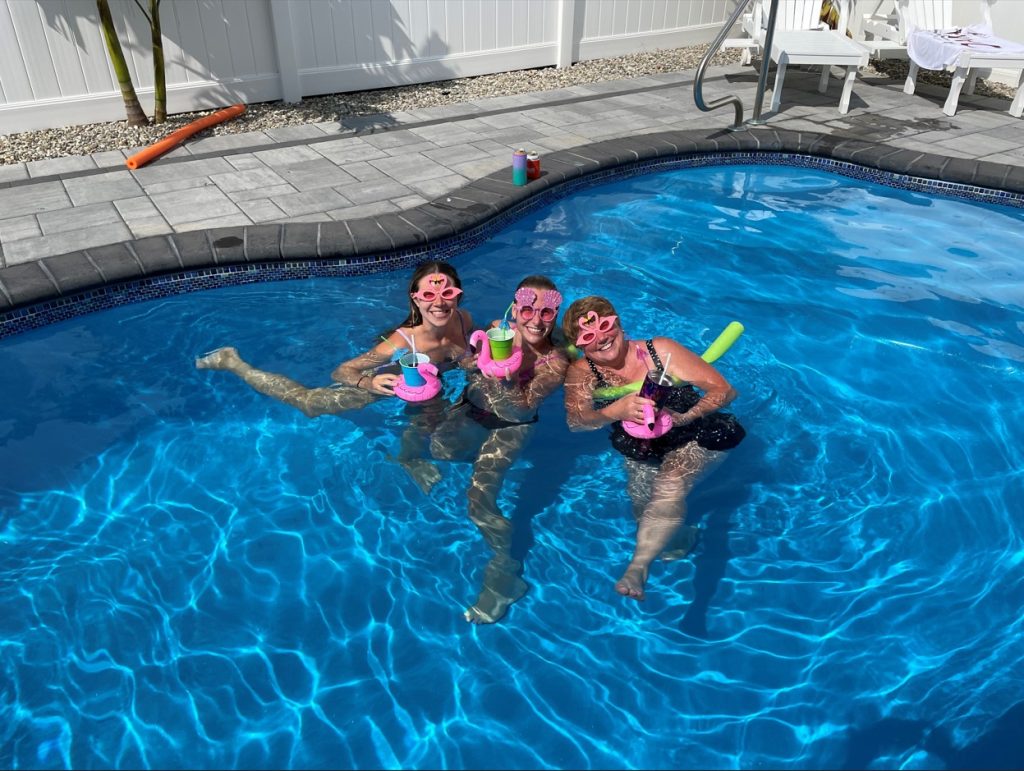While you may have already swapped out your summer flip-flops with your fall boots, now is the time to think about what amenities you want for your new Dakan home. Due to the pandemic, pools are in high demand. To make sure you get what you want in a timely manner, you’ll need to make some decisions long before next summer. Here are some tips to make planning an in-ground pool a breeze.
- Review your budget. The cost of building an in-ground pool will depend on several factors, including the size, design, and type of pool. In-ground pools with minimal patio surrounding and basic fencing start around $50,000. More elaborate designs will run between $75,000 to $100,000+. Your choices for pool design and building materials, patio materials, landscaping, lighting, and extra features like a fountain or spa also will affect the cost.
- Consider your property. Your parcel’s slope, soil type, and accessibility for construction equipment will need to be considered. These issues typically add to the overall cost and duration of the project. However, advances in construction make it possible to install a pool in nearly any yard. Also, think about the movement of the sun when deciding where to install your pool. If possible, select an area that receives full sun during the late morning and afternoon.
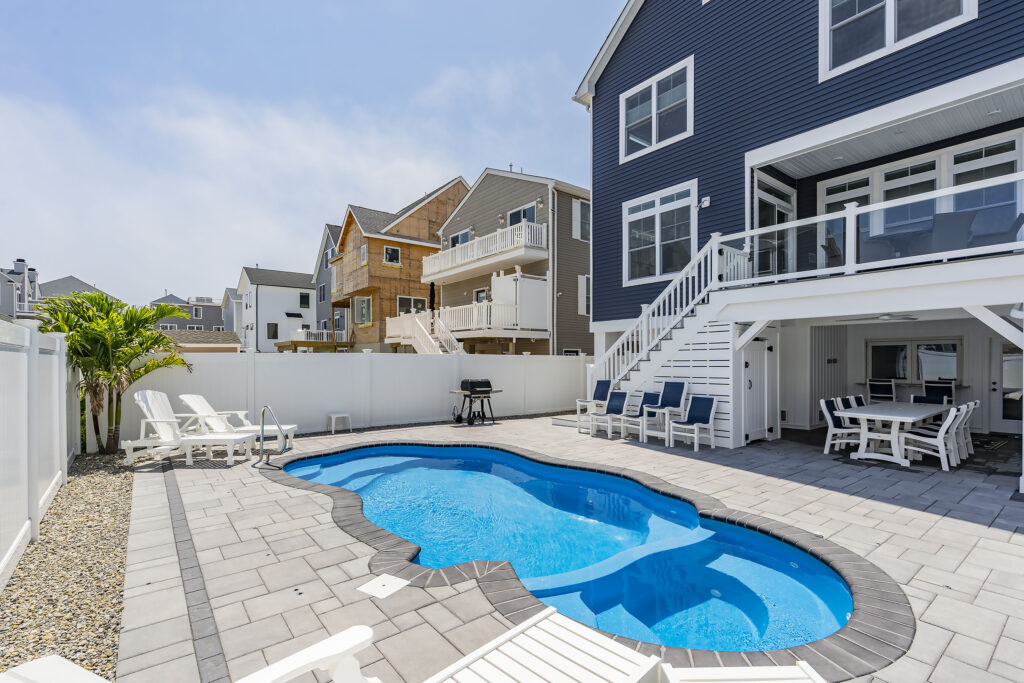
- Pick the type of pool. Do you want a chlorine pool or saltwater? Heated or do you prefer ambient temperature? With advances in energy efficiency, automation, and heating, we can help you find a reliable, high-efficiency system for your pool.
- Choose the material. There are three main styles of in-ground pools: vinyl-lined, fiberglass, and concrete. Fiberglass and vinyl-lined pools are often easier to install, but if you’re looking for a durable, custom pool, a concrete pool may work better. Weigh the pros and cons of each type carefully before deciding. We can walk you through the options and help you make the right choice for your backyard.
- Determine the right size and shape. Pool size is primarily a personal choice. First, make sure the pool fits your space properly. Plunge pools are ideal for yards with limited space and can be as small as 8 to 10 feet square. Lap pools should be a minimum of 6 to 8 feet wide and 60 feet long. And, think about how many people will be using the pool. For example, to accommodate eight people, experts recommend a pool that’s at least 18 feet by 36 feet. For six or fewer people, a pool that’s 16 feet by 32 feet should be large enough. If your pool is primarily for exercise, you’ll want a rectangle-shaped pool. The best shape for relaxing and splashing is bean- or kidney- shaped. However, your town’s specific zoning and building laws may impact how large your pool can be. They also may regulate fencing and barriers, pool depth requirements for diving boards, property setbacks, and proximity to utility lines. We will discuss any restrictions with you.
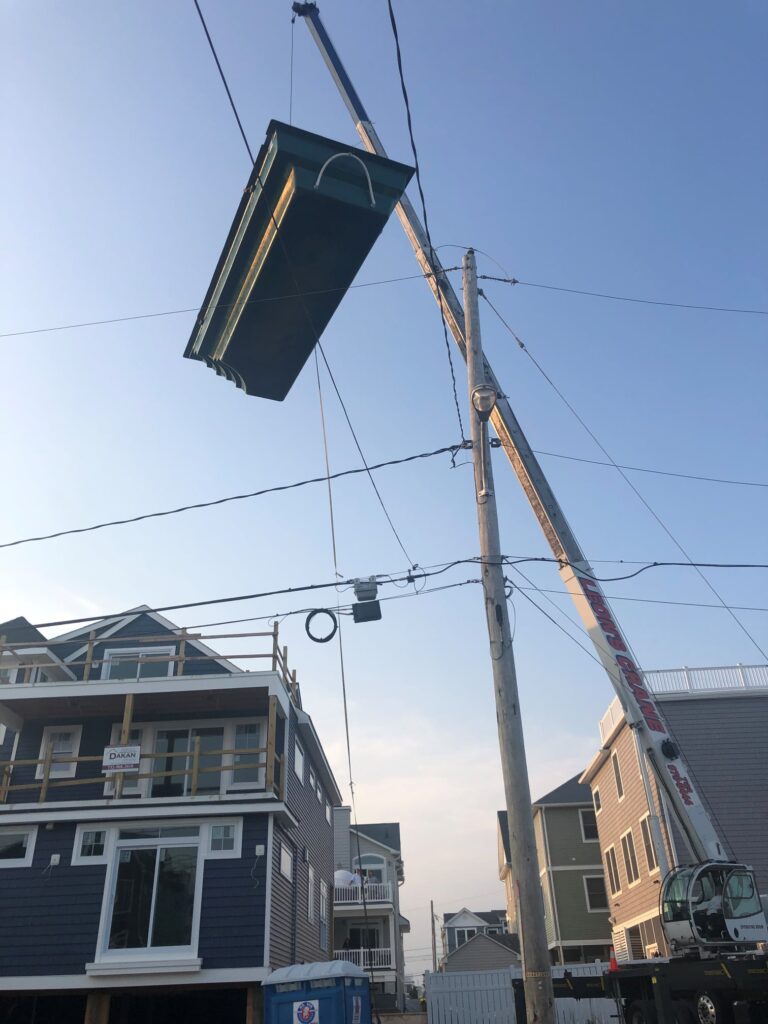
- Add features (or keep it simple). If you can dream it, odds are, we can build it. An attached spa, dynamic jets, underwater lighting, and cascading waterfalls can create a relaxing oasis. Take time to consider what additional features you want for your pool in the early stage of your build. Adding features later can be difficult, time-consuming, and costly.
- Look at landscaping. Proper landscaping can enhance the beauty of your pool. Some people prefer to fill the backyard with a pool and patio, while others want to include green areas as well. Do you want trees to provide privacy from your neighbors or special tile or stamped concrete around the pool deck? You’ll want to add pavers, a deck, or grass for sunbathing.
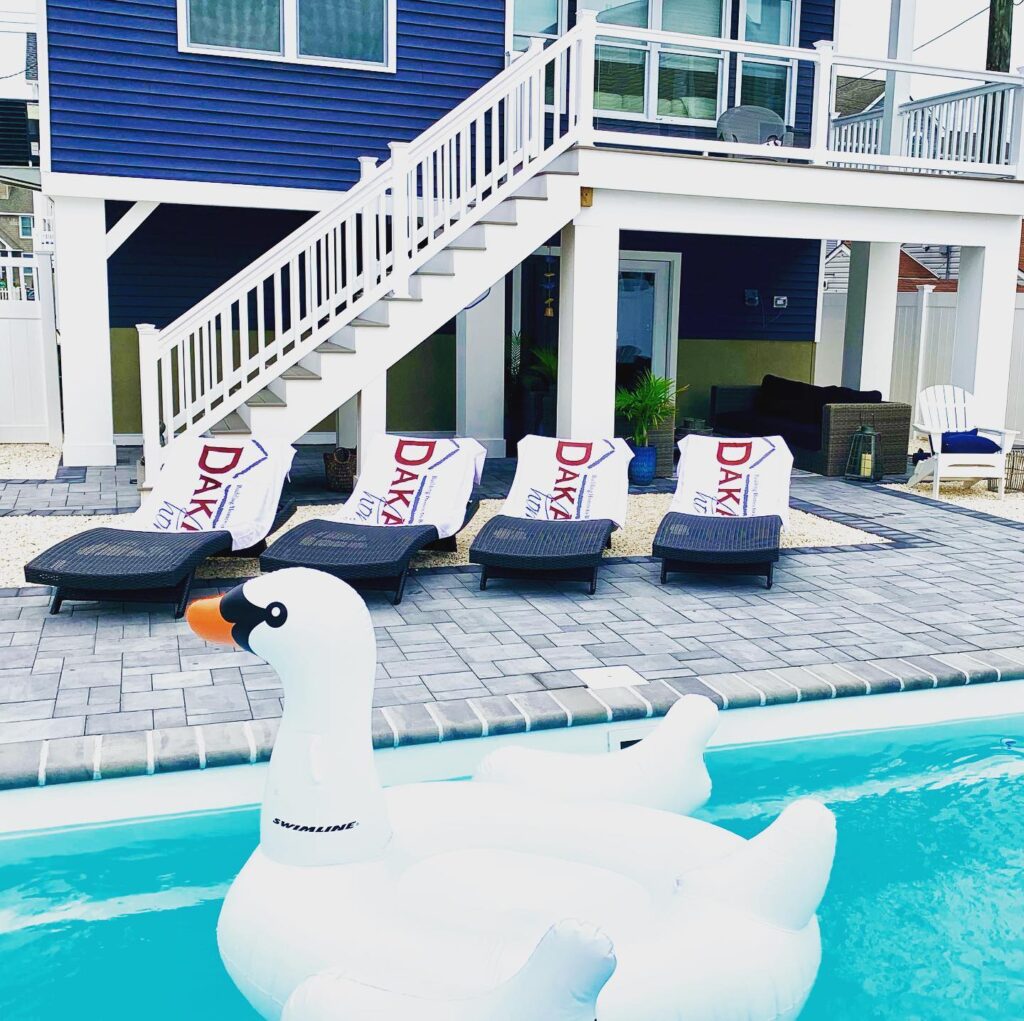
- Safety first. Even if your town or homeowners’ insurance policy doesn’t require it, proper enclosures and supervision are a must to ensure the safety of children and pets. Most areas require pool fencing with self-closing gates. Consider adding water alarms, safety covers, and personal safety equipment like life jackets and pool floats for extra peace of mind.
- Get covered. Insurance coverage for swimming pools is typically part of your homeowner’s insurance policy. However, some insurance companies raise premiums for owning a swimming pool. Speak with your insurance agent about your specific situation.
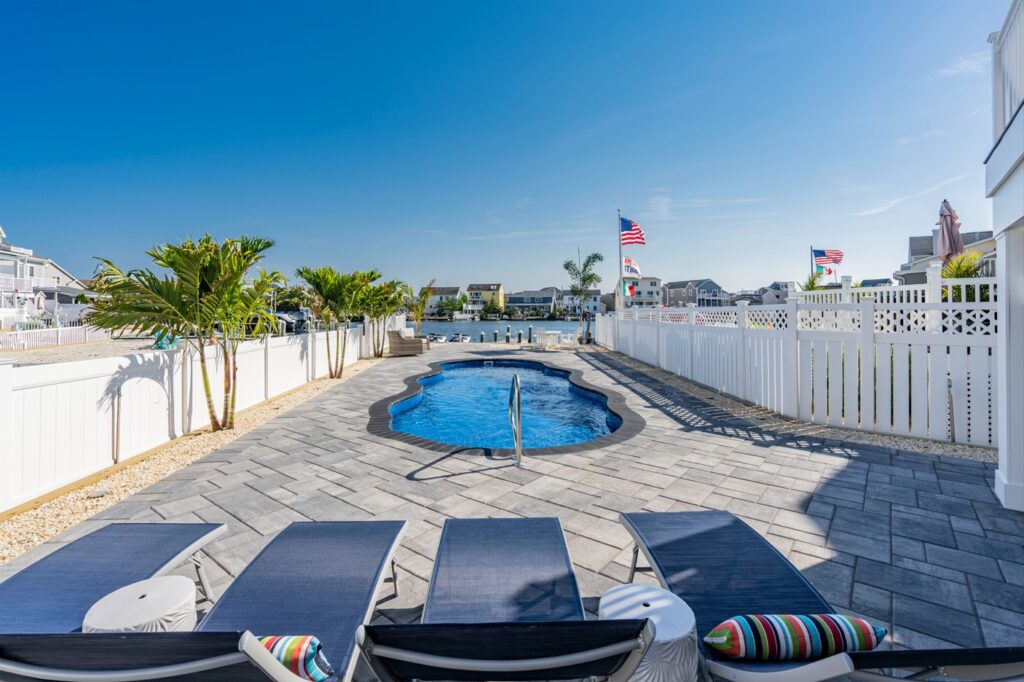
- Don’t forget about maintenance. The expenses associated with a backyard pool continue after construction. Consider these ongoing costs before you choose to add a pool:
- Chemicals: Pool chemicals cost between $50 and $100 per month, depending on your pool size and frequency of use.
- Opening and Closing a Pool: Although you can do it yourself, hiring a professional to open and close your pool each season will run between $100 and $350. Cleaning and storing your pool cover are usually additional fees.
- Equipment: The lifespan of pool equipment varies widely by brand and quality. And, things like proper water chemistry and the location of equipment can affect how long it lasts. For example, because pumps are made to push rather than draw water, pumps placed at pool level often last longer than those that sit higher and must pump harder.
- Utilities: Your utility bills will likely increase when your pool is open due to the electricity needed to power the pump. Another issue to consider is that heated pools require even more energy.
- Long-Term Maintenance: Vinyl liners can last 6 to 10 years, while painted concrete needs a new coat about every five years. A plaster finish could last 10 to 15 years, while many of the new cement-coated products like Pebble Tec are designed to last for the life of the pool. Be sure to factor in long-term costs, too. If properly maintained, pools can be an asset if you choose to sell your home. However, a poorly kept pool can actually decrease your property value, so be sure to hire trained and certified pool technicians to keep your pool sparkling for years to come.
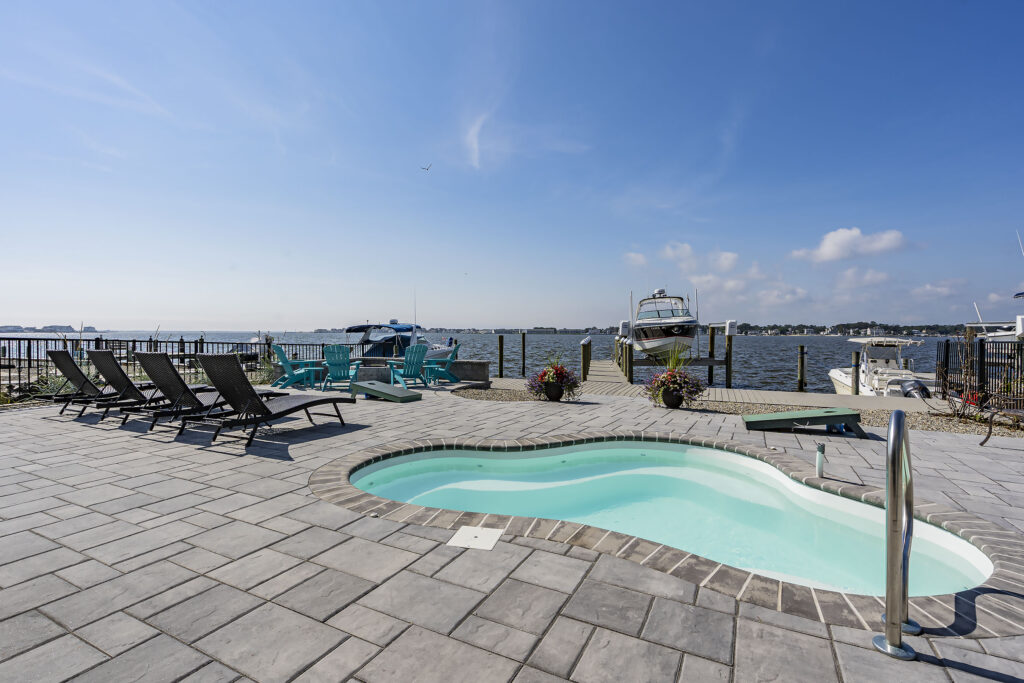
Sources:
https://www.bhg.com/home-improvement/outdoor/pools-spas/planning-for-a-pool/
https://thescoutguide.com/tsg-tip-10-factors-to-consider-before-building-a-pool/
https://californiaoutdoorconcepts.com/what-is-a-good-size-swimming-pool https://www.architecturaldigest.com/gallery/how-to-choose-a-swimming-pool
